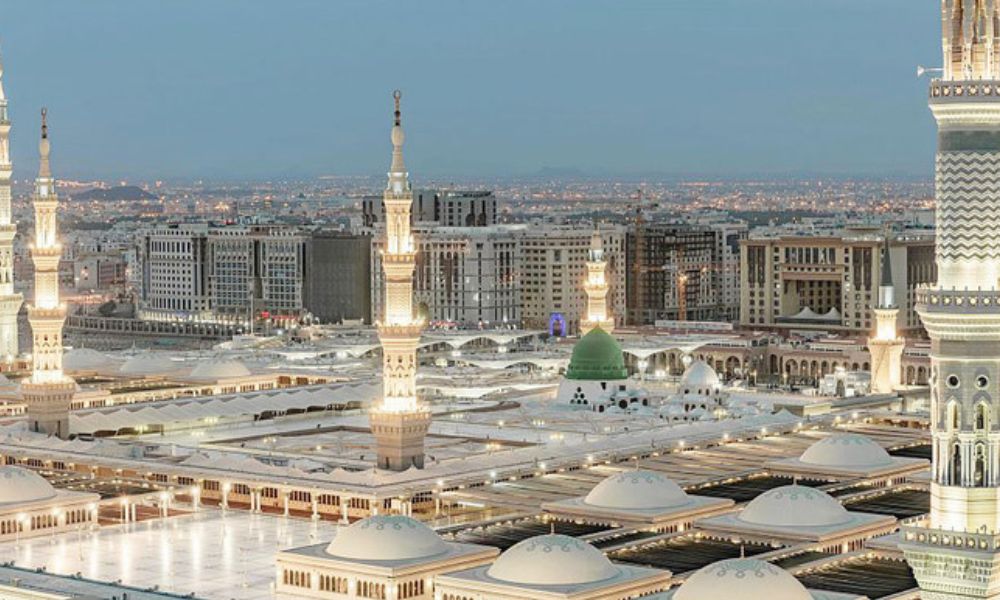
In August 2025, the World Health Organization renewed its accreditation of Madinah (Medina) as a “Healthy City”, reaffirming its status as one of the most pristine, well‑planned and health‑oriented cities in Saudi Arabia and the region Madinah now holds the distinction of being the second largest Healthy City in the Middle East, trailing only Jeddah in scale and continued excellence.
Madinah first earned global notice in 2021 when WHO recognized it as the first city with a population exceeding two million to meet all of WHO’s 80+ healthy‑city criteria. This accreditation covered areas such as environmental quality, water and food safety, community health access, urban design, and integrated governance.
What Makes Madinah Stand Out in Cleanliness and Health?
Comprehensive WHO Healthy City Compliance
Madinah’s Healthy City programs were implemented in strategic partnership with Taibah University, which handled rigorous documentation, electronic compliance tracking, and coordination among 22 government, charity, volunteer and health agencies .This integrated approach allowed WHO evaluators to verify that Madinah met all global standards for urban health delivery.
Holistic Urban and Environmental Planning
Under the “Humanizing Madinah” initiative, the city has remodeled streets with wide pedestrian walkways, pedestrianized zones (including tunnels beneath highways), expanded green spaces, and carefully designed public plazas and parks. These efforts reduce dust, heat and air pollution—ultimately improving walkability and liability at scales uncommon in desert cities.
Local Redid users praise the upgraded paving and public realm:
“Roads were dusty… The new pedestrian walkways are shiny and aesthetically pleasing.”
“Streets are being widened, trees planted; and … in some areas … streets are being fully pedestrianized with car traffic being rerouted through tunnels”.
Food and Public Health Vigilance
As part of Hajj season preparations, Madinah’s health authorities ramped up food safety inspections, testing more than 4,100 food samples and swiftly removing over 180 unsafe items from the market—demonstrating a zero‑tolerance approach to contamination risk and public exposure.
Sustainable Development Recognition
On March 9, 2024, Madinah was awarded the Gold Level certification in the UN‑Habitat SDG Cities program, becoming the first city in Saudi Arabia and the Arab region, and just the third globally, to reach this level .The gold status underscores Madinah’s advanced environmental, social and governance infrastructure—all cantered on citizen well‑being and urban sustainability.
Smart Governance & Data Transparency
The city employs spatial analytics, interactive dashboards, and public data portals to monitor and manage urban services, waste, safety, health and quality‑of‑life indicators across neighbor hoods. This evidence‑based management has been recognized as a cornerstone of sustainable, inclusive city planning.
Madinah vs. Other Saudi Cities: How Does It Compare?
While Jeddah is often cited as Saudi Arabia’s largest and most prominent Healthy City—and remains ahead in scale—Madinah’s repeated WHO accreditation, its UN‑Habitat Gold status, and integrated sustainability efforts place it firmly among the top-rated clean cities in the kingdom. Saudi Arabia now boasts more than a dozen WHO‑recognized Healthy Cities (including Taif, Tabuk, Al‑Khobar, Ad‑Diriyah, Unaizah and others). Madinah’s difference lies in the combination of religious significance, visit volume of millions of pilgrims each year, and urban governance sophistication. Despite massive seasonal population surges, Madinah maintains high air quality, safe water, robust healthcare access, and reliable urban services year‑round—resulting in clean, safe, well managed streets and neighbour hoods.
Why Madinah Attracts Global Attention
- Green eco‑zones and tree canopy expansion help reduce heat and improve ambient comfort for residents and visitors alike.
- Public transport improvements include new bus lines, a planned BRT system, and connectivity via the Hi‑Speed Haramain rail linking Madinah, Mecca and Jeddah.
- Inclusive city design accommodates people with disabilities, the elderly, women and pilgrims—supporting equity in access to services and mobility.
Final Verdict: Is Madinah the “Cleanest WHO City” in Saudi Arabia?
Yes—by multiple measures, Madinah is one of the cleanest and healthiest Saudi cities certified by WHO. With renewed accreditation in August 2025, sustained compliance across over 80 WHO criteria, and a second consecutive Healthy City title, Madinah exemplifies best practice in urban hygiene, environmental stewardship, health governance, and citizen well‑being. Paired with its SDG Cities Gold Level recognition, it continues to serve as a benchmark for clean, sustainable holy‑city development under Saudi Vision 2030.
Whether you’re writing about pilgrimage readiness, urban wellness, or Saudi smart‑city innovations, Madinah presents a compelling case: where spiritual tradition meets global health excellence, yielding a city that is as clean as it is sacred.






It’s fascinating to see how Madinah has integrated urban planning and public health to create such a clean and healthy city. The collaboration between Taibah University and various local organizations seems to be a big factor in achieving the WHO’s criteria.